There are a variety of credit cards offered by many major banks and credit unions currently. Therefore, you can easily search for and choose different types of credit cards that best suits your financial needs. Also, many customers look for a credit card that has an ultimate rewards program for the customer.
A great example of such a credit card is a cash back credit card that offers cash back to users.
A cash back credit card allows the cardholders to have cash back after making purchases using the credit card. Thus, depending on the cash back rate and other factors, you will get a certain percentage of your money back. However, you must use your cash back credit card according to the bank’s regulations to enjoy the rewards.
The article below offers key information regarding cash back credit cards that will help consumers when using the card.
Key Takeaways
· You can easily learn how to check for the best cash back credit card available for one’s needs
· Different credit card rates and fees affect the credibility of a credit card and the cardholder
· There are different types of cash back credit cards available in the market, creating a variety to choose from
What is a Cash Back Credit Card, and How Does the Card Work?
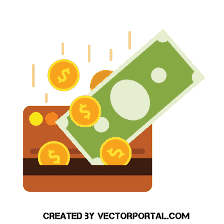
Credit cards come in different types, which suit the need of the users, offering a variety for customers to choose from. Also, many credit cards come with rewards programs for the cardholder, depending on the type of credit card. Some cards may lack rewards which greatly depends on the type of card you choose for use.
Cash back credit cards are a good example of credit cards with an ultimate rewards program set in place.
Usually, there are three types of credit card rewards available from a credit card issuer. They include cash back rewards, travel or miles rewards, and points rewards awarded to different credit cards. Travel rewards mainly apply to business people or those who normally travel to different places. Points rewards allow cardholders to redeem points earned during purchases, while cash back rewards offer some money back to users after purchase.
Therefore, you can choose which category best suits you even if you redeem rewards using a credit card. You can contact your credit card issuer for further assistance in picking a rewards program from your credit card. Although cash back credit cards are easy to operate, some are complex and require more information before use.
Ensure you understand different ways to redeem your points or travel rewards on your credit card.
Cash back credit cards offer cash rewards to the cardholder by giving back a certain percentage of money. Therefore, the cash rewards are calculated using the cash back rate that comes with the card. Different cards from different banks offer different percentages on their cash back credit card.
Thus, you will have to understand the terms and conditions of your cash back credit card before use.
How Does the Cash Back Credit Card Exactly Work?
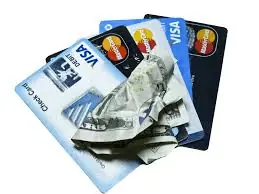
The more you use your cash back card for everyday purchases, the more cash rewards you receive. When you earn the rewards, you can store them in your credit card account and redeem them later. However, you will need to understand the rewards policy of your card as you use it for purchases.
Some cards may offer higher cash rewards on some purchases, while others offer the same rewards on all purchases.
Most cash back credit cards have a minimum threshold for making any redemption on your cash rewards. Hence, you can only redeem your rewards when they accumulate to a certain number of points, depending on the card. However, you can accumulate your rewards and use them together, for example, for holiday shopping.
There is no limit to the number of rewards you want to accumulate within a year or a certain period.
How to Redeem Cash from Cash Back Credit Cards
There are different ways to redeem rewards after spending using your cash back card. Usually, your card issuer has a portal where you can check various options that allow you to redeem your rewards. Although the time taken to redeem your rewards may vary, look for an option to maximize the amount you get.
The most common ways to redeem your rewards include the following:
Statement credit
A statement credit is a way of redeeming cash that lowers the credit card bill on your rewards card. Therefore, the balance on your rewards card should be less than what you receive as your cash back reward. However, you are required by your card provider to pay for the credit card balance on time, as usual.
Failure to pay your balance on your rewards card will greatly impact the rewards program on your cash back card.
Therefore, the statement credit on your credit card account will significantly lower your rewards card balance. Thus, the more rewards you redeem, the greater your statement credit will be, which is helpful for the cardholder. Statement credits can also be used as annual travel credits if you have a travel rewards card.
However, ensure you follow the rewards policy from your card issuer to receive statement credits.
Direct deposit
A direct deposit allows your card issuer to send the credit card rewards directly to your bank or savings account. Therefore, you can receive your cash rewards from your card issuer to your linked bank account. Alternatively, you can request a check that will act as a direct deposit from the rewards cash. Some cash back cards allow users to redeem cash for gift cards which they can use for everyday purchases.
Other ways to receive rewards when you earn cash through your cash back credit card include donations. Some cardholders request their card issuer to send their rewards to charity organizations as donations.
Our Research Process
The article below has vital information readily available for all cardholders to help them understand how to choose credit cards. The process of comparing cash back credit cards is very detailed to help card users identify the best card for them. Certain criteria are used to rank the best cash back credit card, which is an important tool for cardholders.
Therefore, stick around to learn more about selecting the best cash back credit card that works for you.
It is important to note that there are different aspects that customers should check before obtaining a cash back card. Hence, this article will be useful in classifying the most popular cash back credit cards available according to their strengths. Therefore, customers can look for the best cards that allow them to earn cash rewards in the easiest way possible.
Some of the things to look out for when getting a cash back credit card includes the following:
Cash Back Rates
Cash back rates are the most vital issue to look at when attempting to apply for a cash back credit card. The cash back rate is a percentage calculated against the amount you use for purchases. Therefore, the cash back rate will determine how much you can earn cash rewards from your purchases.
The greater the cash back rate, the more cash back rewards you will receive on your rewards card.
Usually, the cash back rate ranges from 1% to 5%, although some cards offer rates up to 6%. A cash back rate of 2% is best recommended since such cards carry low additional fees, for example, no annual fee. Most cash back credit cards offer the same rate for combined purchases across different stores, including online retail purchases.
However, some cash back credit cards offer different percentages for different purchases, depending on the type of purchase made. Also, users should be keen on the terms and policies kept in place while using their cash back credit cards.
Here are some examples of rewards cards with the best cash back rate offers:
1. Blue Cash Preferred Card
The American Express cash back credit card offers users cash back at U.S. supermarkets, grocery stores, and gas stations. The card offers a 6% cash back rate on U.S. supermarkets for a limited amount spent for a year. It also offers a 6% rate on some U.S. streaming subscriptions and 3% on U.S. gas stations and transit.
Other purchases will attract a rate of 1% as a cash back rate on the cash back credit card.
You can redeem the cash reward using a statement credit as you earn cash using the rewards card. Cash rewards come in the form of reward dollars, not reward points, making it easy to calculate and redeem. Generally, the Blue Cash Preferred Card is the best cash back credit card for shopping in grocery stores. Although the card offers an annual rate, it has the highest cash back rate, free for the first year.
Alternatively, users may prefer to use the Blue Cash Everyday Card, also from American Express. It lacks annual fees and has a cash back rate of 3% on U.S. supermarkets, online retail purchases, and gas stations. However, you need to follow the policy set to receive the 3% cash back at U.S. purchases at a limited amount per year.
The card is more affordable than the Preferred card, making it a better option for shopping in grocery stores and online. Also, you can earn cash as a Blue Cash Everyday Preferred Rewards member if you qualify for membership.
2. Wells Fargo Active Cash Card
The Wells Fargo Active Cash Card offers a flat rate of 2% on all purchases, offering cash back on all purchases made. It is the best card to use with a flat rate since the flat rate cash back on items remains the same throughout. Unlike other rewards cards, it has no annual fees applied to the card with no hidden fees in place.
Additionally, users get to enjoy protection against phone theft or damage if they pay their monthly cell phone bill using the card. Thus, the Wells Fargo Active Cash Card is highly recommended due to its simplicity in receiving cash back.
3. Citi Double Cash Card
The Citi Double Cash Card ensures its users have a 2% flat-rate cash back on all purchases made using the card. You will receive the cash back rewards in two parts, 1% when you make purchases and another 1% when you finish. Additionally, you will not have to pay any annual fee when using the card, offering a cheaper alternative to most cards.
The rewards system is very straightforward; hence, you will easily receive your rewards through statement credits or checks.
4. Savor Rewards Credit Card
The Savors Rewards Credit Card is the only card to offer rewards and cashbacks for entertainment through Capital One entertainment purchases. Also, you can get bonus rewards for making other purchases in grocery stores and dining. It offers cash back rates at 5% for rental cars booked through the Capital One Travel platform.
Also, you can get 4% rates for Capital One entertainment purchases, including paying for popular streaming subscriptions. It is a well-rounded rewards card with 3% cash back on U.S. grocery stores and 1% rates for other purchases.
5. Capital One Quicksilver Cash Rewards Card
The Capital One Quicksilver Card offers a flat rate cash back of 1.5%; thus, users will receive 1.5 cash back on all purchases. It is a great card to use if you have an average credit score or use it for building your credit score. Users do not pay an annual fee to access and use the card, offering them a low-maintenance option.
Also, receiving the rewards is not an uphill task since cardholders will receive their rewards through direct deposits or statement checks. It is a cheaper alternative for those who do not make large-scale purchases or first-time card users.
Every cash back credit card has its own policies, rates, and charges. Therefore, it is necessary to consult with your card issuer for the best card that suits your needs. Generally, cards with the highest cash back rates offer the best rewards systems on combined purchases and other purchases.
However, such cards have the highest fees, including an annual fee for some cash back cards. The reverse is also true, where cards with low cash back rates are cheaper to maintain with low charges to the card.
Interest Rates

Interest rates apply to every credit card, whether or not they have an ultimate rewards program. However, different interest rates will apply to each card differently, depending on several factors, including the type of cash back card. Therefore, each cardholder will have to meet a certain set of requirements while applying for a specific card.
Thus, your requirements will determine how much interest your card will receive.
An interest rate is basically the amount of money a card issuer will charge you to borrow money. It is important to note that all types of credit cards allow cardholders to borrow money and repay it after some time. Therefore, interest will be incurred by the cardholder depending on the amount of money they owe the credit card issuer.
Also, your credit score, credit card limit, and credit history will determine how much interest you incur. You must pay your credit card balance, including interest rates, to avoid credit card debt and improve your credit health.
Some cash back credit cards will have a higher interest rate than others, especially if the cash back rate is high. Therefore, you will pay back a higher amount than you borrowed, but you will receive higher rewards, including bonus rewards for some. Thus, you must consult your card issuer to see how you can apply the interest rates.
Comparing interest rates with other cards will help you find which cash back credit card works best for you.
Users may find the term APR or annual percentage rate when applying for a cash back credit card. The APR is a fee charged on the credit card when you make purchases, aside from the initial interest fee charged. However, it is different from your interest fee since it is a combination of other fees charged to your card yearly.
Mostly, APR is considered the same as the interest charged since it works the same as interest fees for credit cards.
How Does APR Apply on Cash Back Cards?
APR charged on a card can either be fixed or variable; that is, it can either remain the same throughout or fluctuate. Any America financial center can change its variable APR depending on the economic state of the country. For example, the governing bodies will lower the general APR on credit cards during a recession to increase their lending power.
However, APR charged on cash rewards credit cards is significantly influenced by an individual’s credit history and ability to pay creditors. Therefore, if your credit health is higher, then your APR will have a lower percentage than those with poor credit scores.
However, there is a means of avoiding APR charges on your cash rewards credit cards altogether. You will incur an APR charge if you pay the minimum credit payments and remain with a balance. Thus, you can only have high interest rates when you do not finish making your monthly payments in due time.
When you carry forward your balance, you will incur APR, but if you clear your balance on time, you will not pay APR.

You can use your cash rewards credit cards to help pay off some of your credit balance through a statement credit. A statement credit will be useful as you redeem rewards when you earn cash or bonus rewards. The statement credit will lower the balance you are supposed to clear by deducting the amount equal to your cash rewards.
Thus, the more you earn cash from your rewards card, the higher the amount will be in your statement credit.
Cash rewards credit cards with a higher cash back rate have higher fees applied to the card, including higher interest. However, such cards offer the highest returns and are available for people with outstanding credit scores. Therefore, the card’s value is higher than other competing cards of the same category.
An APR of 27% is the recommended percentage for cash rewards credit cards. For further assistance, contact your credit card issuers to assist you in choosing the best cash back credit card.
Cash Rewards Credit Cards with the Lowest Interest Rates
1. Chase Freedom Unlimited Card
The Chase Freedom Unlimited Card offers 5 % cash back on travel purchases by earning cash through Chase Ultimate Rewards. It also offers 3% cash back on dining or drugstore purchases and 1.5 cash back on other purchases. The 0% APR on all purchases for 15 months after account opening offers one of the best rewards card deals.
Depending on your credit health, you may continue to benefit from lower interest on your card after the promo. All the cash rewards you receive will not expire as long as the card remains active.
2. Chase Freedom Flex Card
The Chase Freedom Flex Card is a category-based card that offers 5% on travel through the Chase Ultimate Rewards program. Also, it offers 3% cash back at U.S. restaurants and drugstore purchases, with 1% cash back on other purchases. It also has a 0% APR for the first 15 months after opening the credit card account.
The interest remains relatively low, depending on the cardholder’s credit score and general creditworthiness. The Chase Credit Journey helps anyone to check their credit score when applying for rewards cards without requiring a Chase account.
3. Wells Fargo Active Cash Card
The Wells Fargo Active Cash Card offers a flat rate cash back on cumulative purchases at 2%. Therefore, cardholders will incur very low interest rates and APR on the card even after the promo ends. You will also enjoy a 0% APR within the first 15 months of using the cash back credit card for all purchases.
It is a straightforward cash rewards card since using and redeeming awards is not complicated.
Fees
Every credit card issuer will charge fees on the credit card for making purchases or other transactions. However, not every cardholder understands the fees that credit card issuers charge on their cards. It is important to know and understand the fees the bank charges to your card and compare it with other cards. Some of the fees that credit card issuers charge on your reward card include:
1. Balance transfer fees
Balance transfer fees are charges applied when you transfer your credit balance from your rewards cash to a different credit card. For example, you can transfer your credit from a different bank to your cash back credit card. You should contact your card issuer while transferring your balance before initiating the transfer process.
Your bank will decide on the fees to charge you depending on the amount you transfer to the other credit card.
Some cash back credit cards will offer a promo on the intro balance transfer fee for some time upon account opening. For example, the Chase Freedom Unlimited card offers a lower percentage of an intro balance transfer fee for the first six months. Also, it is important to note that APR can be charged on balance transfers by the bank, which some cards can waive as a welcome bonus.
For example, Citi Double Cash Card offers 0% intro APR on qualifying balance transfers for the first 18 months.
2. Transfer fees
Most credit card issuers may charge the cardholder some fees depending on the transactions they make using their rewards card. Also, the bank may charge fees for making direct deposits, bank cash advances, check cash advances, and other balance transfers. The bank also charges foreign transaction fees if you use the card through a foreign bank or foreign currency.
When you use the card to conduct international transactions, a foreign transaction fee is charged to your rewards card. For example, you can use your card for online retail purchases from another foreign country. Also, you can use the card while making other purchases in a foreign country that accepts your rewards card.
Most cards have foreign transaction fees of about 3% of the total amount of all the cash spent on purchases.
Cash advance fees may also apply when you borrow money to keep it in your pocket through a credit card. For example, cash advance fees will apply when you use an ATM to withdraw money using your card. The fees are more expensive since you will pay a transaction fee and a higher APR than when making purchases.
Also, you will acquire interest at the withdrawal time since there is no grace period for a cash advance.
3. Late fee
Credit card issuers will penalize the cardholder by charging them a late fee when they are late to make payments. A late fee differs from APR and interest charges since it is a penalty added to your total payment. Also, APR is a percentage of interest you pay for transactions if you have credit balances.
4. Checkout fees
Checkout fees are regulated charges that some merchants add to credit cards, including cash back credit cards. The merchant will add a checkout fee for every transaction, according to state law, which limits the fees. According to the store’s policy, the merchant should disclose if merchant fees are applicable.
If the merchant overcharges or does not disclose the information before purchase, you are legible for refunds. In case of surcharging, the state attorney general’s office will offer guidance concerning your credit card. Also, if you need to return a product after purchase, you are legible to gain a refund of the checkout fees you spent.
Checkout fees will reflect on the receipt, seen as a separate line item once you finish making your transactions and purchases.
5. Interest charges
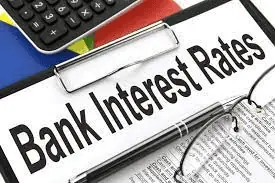
Interest charges are the total interest that applies to your credit card after transactions. Also, if you fail to pay your credit balance before the due date, you might accumulate interest, which is an annual percentage rate. To avoid paying interest and APR, always make your payments on or before the due date.
You can arrange for automatic payments or have automatic reminders to your account before your payment date.
APR is variable on most credit cards due to the prime rate, which is the bank’s interest rate. The prime rate is available for the bank’s creditworthy customers, especially those with good credit scores. However, other credit cards have a fixed APR that cannot change or does not depend on the prime rate.
Thus, checking your credit card agreement to see whether your APR is variable is essential.
6. Annual fee
An annual fee is an amount the bank will charge a cardholder for using a cash back credit card. Most cash rewards credit cards lack an annual fee, but those with annual fees have a high rewards program. The cardholder will pay the annual fee as the cardholder first opens their account, then every 12 months of use.
The bank may opt to spread the fee, making it a monthly payment during every billing cycle. For example, the Blue Cash Preferred Card has an annual fee but offers one of the highest rates on cumulative purchases.
What is the Difference Between An Annual Fee and APR?
An annual fee is the fee credit card issuers will charge the cardholder for using a specific type of credit card. Although most cash rewards credit cards have a 0 annual fee on the cards, some carry an annual fee. Annual fees are paid when you open the account and once a year, as seen on your monthly statement.
Sometimes, the card issuer offers its customers the option to spread out their annual fees to be paid as a fixed monthly fee. The main benefit of having a credit card with annual fees is that it has higher rewards for the cardholder. Different cards have different annual fees, depending on the type and use of the card by the customer.
Additionally, only people with a higher-than-average credit score and FICO scores may use a credit card with annual fees.
An annual percentage rate is a yearly interest you pay if you do not finish paying off your card balance. The APR varies greatly depending on your type of credit card and how you manage your finances. People with high credit scores and who make their payments on time have a lower APR for their credit cards.
A cardholder with two separate credit cards may have different APRs since APR does not remain constant. However, some credit cards have a fixed APR, which you must confirm before applying for a credit card. Since APR interest on credit cards is avoidable, ensure that you keep up with the payments at the due time.
Always check with the bank to know what your APR is and whether or not it is variable.
Credit Score
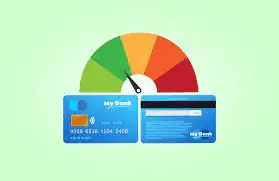
A credit score is the measure of an individual’s creditworthiness, using numbers from 300 to 850. Thus, a bank or credit union will calculate an individual’s creditworthiness to determine how much credit they deserve. The better your credit score is, the higher the money you can borrow as loans or credit.
Any American financial center will use different measures of calculating a person’s credit score when offering credit cards.
Banks use different ways to measure a person’s credit score based on their credit history. A credit history carries all the information concerning an individual’s credit, the number of open accounts, and credit balance. Therefore, many banks will decide how much credit and credit limits they offer credit card applicants depending on their scores.
Also, the interest fees and APR will be generated and calculated depending on your credit score. Having a good to excellent credit score increases the chances of receiving high-value cash rewards credit cards with low interest.
When applying for a cash rewards credit card, it is important to know your credit scores beforehand. You can know how your credit score ranges using the Chase Credit Journey program offered by Chase Bank. You do not have to open a bank account to use the Chase Credit Journey program.
Also, you will enjoy benefits such as alerts in case your credit scores change positively or negatively.
What are FICO Scores?
FICO scores are a form of credit scoring model, among several other models such as the VantageScores scoring model. Most banks will decide which scoring model is most suitable for the customer depending on their financial capabilities. FICO scores mostly stand out when the bank wants to gauge their customer’s ability to pay their debt.
Thus, FICO scores fall under types of credit scores that the bank can obtain from your credit report.
Sometimes, you can have different FICO scores depending on the type of version and use of the scores. The different versions of FICO scores are always up-to-date, providing the bank with a uniform scoring method. However, FICO scores will range from 300 to 850, with 850 showing you have an excellent score. A FICO score between 600 and 800 guarantees having a high-value cash back credit card.
Always ensure your credit history positively impacts your credit reports to improve your credit and FICO scores.
To improve your credit score, especially when applying for cash rewards credit cards, try doing the following:
· Make your credit card payments on time
· Keep your old accounts open to increase your credit age
· Limit your credit card applications
· Lower your credit card balances
· Avoid collecting penalties due to lack of credit payment to the bank
Although opening a card with poor credit scores is hard, there are several cash rewards credit cards available:
1. Bank of America Cash Rewards Secured Credit Card
The Bank of America Secured Card is a credit card that ensures users pay a credit deposit while applying for the card. Secured credit cards are common for people with poor credit scores or who wish to rebuild their scores. However, the card offers its users a chance to earn cash through its ultimate rewards program.
Users can earn up to 3% cash back on U.S. grocery stores, online retail purchases, and other eligible purchases. Also, cardholders can continue using the card and upgrade it to an unsecured cash back credit card.
2. Discover It Secured Card
Discover It is also a secured card with cash rewards for its users at a flat rate cash back of 2%. It is best for those trying to rebuild their credit score or new users of credit cards. Thus, you can earn cash rewards on all eligible purchases, including cash back on U.S. restaurants and gas stations.
Therefore, you can slowly build your credit using the Discover It secured cash back credit card.
However, if you are looking for cash back rewards cards with the highest credit scores, you can select from the following:
1. Capital One SavorOne Cash Rewards Credit Card
The SavorOne Rewards Credit Card is readily available for cardholders with a FICO score of between 670 to 850. It offers 8% cash back on Capital One entertainment purchases, which is the most rewarding card. Also, there is 5% cash back on rental cars booked through the Capital One Travel platform. There is also 3% cash back on U.S. grocery stores, restaurants, and other eligible purchases, with 1% cash back on other purchases.
2. Citi Double Cash Card
The Citi Double Cash Card requires cardholders to have a FICO score of between 670 to 850 to qualify for the card. It offers a flat rate cash back on all combined purchases at 2% with no annual fee. It is easy to manage and calculate the rewards as you earn cash through the card.
3. Blue Cash Preferred Card
The Blue Cash Preferred Card by American Express also requires users to have a FICO score of 670 to 850 to use the card. It has a 6% cash back at U.S. supermarkets and streaming subscriptions, with 3% cash back on U.S. gas stations and transit. Users also get a 1% cash back on all other purchases.
Although the card has an annual fee payable after the first year, it has an elaborate rewards program.
Categories
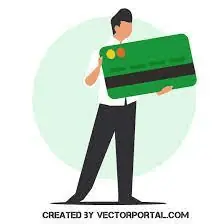
Different types of cash back cards available within the market give users a variation that suits their needs. Therefore, customers have a variety of cash back credit cards to choose from, which they can easily work with. There are several categories to choose from, as shown below:
1. The flat-rate cash rewards credit cards
These types of cash back cards have a standard of cash back on all purchases made using the card. Usually, the card carries low interest rates, no annual fees, or other types of maintenance fees charged to other cards. Therefore, they give a flat rate cash back on all purchases, including streaming subscriptions and online retail purchases.
The standard flat rate cash back on items is either 1.5 cash back or 2% for some cash rewards credit cards.
For example, the Capital One Cash Credit Card offers a flat rate cash back of 1.5 cash back on all cumulative purchases. It does not have any annual fee added to the card, making it a cheaper option, especially for first-time users. Another example is the Wells Fargo Active Cash Card, which offers 2% cash back on all cumulative purchases with no annual fee.
The Citi Double Cash Card offers a 1% cash back rate on items during purchase and 1% cash back after completing the purchase.
However, it is important to check the fine print regarding flat-rate cash back cards when using them for transactions. Some may not offer cash back on a few transactions or balance transfers. They may also lack bonus cash during the initial use of the cash back credit card, as seen in other cards.
Also, you must improve your creditworthiness, such as paying balances on time to receive cash rewards.
2. The tiered cash rewards credit card
The tiered cash back card allows users to receive more cash rewards on eligible purchases during certain times. Also, they offer a flat rate cash back on all other purchases as you receive higher rewards for eligible purchases. Therefore, you can pick a category of items you would like to have a higher cash reward, including an eligible delivery service.
For example, some cash back cards will offer higher cash back rates on the category if you spend more on grocery stores.
Cash back cards like the Blue Cash Everyday Card offer 3% cash back on U.S. most online retail purchases and gas stations. However, it has a 1% cash back on all other purchases, allowing customers to maximize their cards for other purchases. The Savor Rewards Credit Card offers a higher cash back rate on Capital One entertainment purchases.
It also offers higher rewards for rental cars booked through the Capital One Travel platform. Then, it offers standard flat rate cash back on other purchases that are not eligible for higher rewards.
However, checking out the terms and conditions applied when using the tiered-rate cash rewards card is also important. For example, check the limits of your spending on making purchases while using the tiered rate. Also, check what available options the tiered rate applies to ensure you maximize your rewards.
Check on categories you can choose from which you would like to receive higher cash back rates to maximize your rewards.
3. Customizable rewards credit card
Customizable cash rewards credit cards offer users a chance to pick the category in which they would like to earn more rewards. They are tiered-rate cash rewards credit cards, but cardholders can choose from the eligible purchases. Therefore, you can select a category on which you spend more money on to receive a higher percentage of cash back rate.
The manual selection of the category makes it easier to keep track of the options you choose for high rewards.
Some cash back credit cards allow users to choose from certain categories, especially those in which they spend more cash. Cards such as Bank of America Customized Cash Rewards card allows users to choose the category they want. In this case, you can choose to earn cash back on U.S. some online retail purchases, gas stations, or drugstore purchases.
Thus, you will earn more rewards by receiving higher cash back rates, that is, 3% on eligible purchases. Also, you can change the category earning a higher cash back rate once every calendar month.
4. The rotating category of cash rewards credit cards
The rotating category is not as straightforward as other categories shown above since it requires activating the bonus categories. For rotating category cash back cards, you will receive a higher cash back rate on eligible purchases quarterly. Thus, the bonus category cash will be applicable on the selected eligible purchases every four months yearly.
Then, other bonus categories will be selected for the user to receive higher rewards, thus becoming rotating bonus categories.
For example, the Chase Freedom Flex credit card offers 5% cash back on its bonus categories through the Chase Ultimate Rewards for travel. Then, it offers 3% cash back on U.S. drugstore purchases, restaurants, and an eligible delivery service. The other purchases made through the card will receive a 1% cash back rate from the card.
Therefore, you will need to activate the bonus categories every quarter to access your bonus rewards from the card. The categories selected will keep shifting to ensure you have maximum rewards from each category yearly.
The Citi Custom Cash Card is a unique cash back card since it can be classified under two categories: tiered rate and rotating category. There are ten categories to choose from, which will rotate, earning you a 5% cash back rate for every billing cycle. Thus, you will have to manually select and activate the bonus categories to receive your bonus rewards.
Other combined purchases that do not form part of your rotating bonus categories will receive a 1% cash back rate.
Welcome Bonus

A welcome bonus is a reward the cash back credit card offers first-time users of the card. Thus, you can receive a sign up bonus in the form of cash during your account opening. Also, you can receive discounts on APR incurred as you make purchases and balance transfers while using your card.
The intro balance fee may also be slashed for some cash back cards, especially the ones with high cash back rates.
Considering how long the bonus rewards will last after account opening is important. Generally, the credit card has offers running for a few months to allow new users to enjoy the bonus rewards. However, you must maintain good creditworthiness to continue enjoying some bonus rewards, such as discounts on purchases and balance transfers.
Also, ensure you do not carry any credit balance to avoid negatively impacting your credit health.
Different cards carry different sets of welcome bonus rewards for their customers. Most of these cards have policies for customers to follow to earn cash as bonus rewards. For example, the Capital One Savor Rewards Credit Card offers a bonus reward within three months of card opening.
However, you will need to use your card and make purchases worth a certain amount of money to receive the bonus. Others, like the Citi Custom Cash Card, will offer its customers Thank You points that can be redeemed as cash.
Some sign up bonus rewards will come as an unlimited cash back match during account opening. Cash back cards such as the Discover It card will offer unlimited cashback match as an intro offer for your first year. Thus, they will double the cash rewards you receive the entire year after your account opening. There is no limit to the rewards you receive since they will match your rewards when you redeem cash.

Other Rewards and Features

Some cash back credit cards customize their rewards program to be unique to the card, allowing it to stand out. Therefore, customers can get lucrative deals and high bonus rewards while using the card from specific card issuers.
For example, Wells Fargo Active Cash Card offers phone protection if you pay your phone bill using the card. The Savor Rewards Credit Card offers high cash back rates when making Capital One entertainment purchases. Also, you can get protection in case of damage on rental cars booked through the Capital One Travel platform.
Chase Freedom cards offer a higher cash back rate on their Chase Ultimate Rewards program.
Therefore, each credit card issuer has its own unique way of attracting customers and withstanding competition. Alternatively, some cash back credit cards offer their users minimal interest fees or a 0 annual fee. For example, the Citi Double Cash Card has no annual fee, but it has unlimited cash back of 2% rate on cumulative purchases.
The Blue Cash Every Day Card has a preferred rewards member program to help cardholders accumulate more rewards. Also, the cardholder will not pay any annual fee when using the card to earn rewards through the program.
How to Manage Your Rewards Using Multiple Cards
Sometimes, you may find that you have more than one cash rewards credit card actively in use. You can combine your rewards and redeem all the cash rewards together. However, there are a few conditions that you must meet for you to manage multiple cards at the same time. Therefore, it is important to know the policies beforehand as you try redeeming cash from multiple cards.
First, you can only combine the cash rewards credit cards if they are from the same banks or credit card issuers. For example, you can combine the rewards from a Blue Cash Preferred Card and a Blue Cash Every Day Card. Both cards are from American Express, thus, sharing the same credit card issuer. Therefore, you will receive higher rewards as you cash out your rewards after transferring them to one card.
Secondly, you can combine cash rewards if they offer the same type of rewards on the credit card. For example, you can only combine cash back rewards cards with another cash back card, not a point rewards card. However, Chase Bank is the only card issuer with an exception to this rule due to the Chase Ultimate Rewards program.
Thus, you can merge a point card with a cash back card if they both are issued only by Chase.
How to Maximize the Rewards You Receive from Cash Back Credit Cards
Earning rewards from your cash back card is a great advantage for cardholders since you will receive some money. However, you must learn how to maximize the number of cash rewards you receive after redeeming the rewards. You can manage to do a few things to increase the amount of money you receive as cash back on your rewards card.
Here are some of them:
1. Pay all your credit balance on time
Delaying credit balance payments is the easiest way to lose all the cash rewards you earn. Some cash back credit cards might even deny rewarding you if you only make your minimum payments and carry balances forward. Thus, ensure you have a great payment routine on your credit balance to avoid interest charges.
That way, you will maximize your cash rewards credit card throughout.
2. Maximize on bonus rewards
Tiered-rate cash back cards and rotating bonus categories offer the best type of bonus rewards. Therefore, you will receive bonus category cash rewards several times a year, increasing your cash rewards. Also, go for cash back cards that have a sign in bonus over longer periods to enjoy the benefits for longer. Thus, you will reduce the charges applied when making purchases and balance transfers.
3. Maximize on an eligible spend category on your card
Check your spending habits to see where you spend the most money, and use that category for your cash back card. For rotating bonus categories, you can choose a card that will cater to your eligible spend category. Thus, you will gain more cash rewards since you will spend more money on that category than others.
If your spending habits change, you can always pick another category to receive the highest cash back rate on the card.
4. Choose your redeeming options that maximize the amount you receive
Select a redeeming option that matches the value of the cash rewards you earn on your card. Some options will offer you less money than the one you have earned on your card. Aim to receive the same value of your rewards as you redeem your cash rewards and bonus rewards.
You can also consider the time taken to redeem your cash since some methods, like a statement credit, takes longer than others.
5. Avoid using cards with an annual fee
Cards with no annual fees work best for people who do not use their cash back cards to make large purchases. Thus, if you are a low-spender, a 0 annual fee on your card will also minimize other charges incurred. However, cards with annual fees will have higher cash back rates on all eligible purchases.
Opt for a card with an annual fee if you are completely sure you can pay back your credit balance.
Rules

As discussed earlier, each type of cash back card has its own set of rules and policies for users who earn cash back. Thus, every user will earn differently from each category of cash back card. For example, rotating bonus categories and tiered-rate cash back cards allow users to select from a category. Therefore, there are eligible purchases that users can make for them to earn a higher cash rate than others.
Ensure you understand how to activate your bonus rewards, especially for rotating bonus categories. Thus, you should follow the policies on selecting a category with a high cash back rate during that period. Additionally, ensure you know the limits to the amount of money you need to make on eligible purchases.
Some cards, like Blue Cash Preferred Card, will offer a high cash back rate on purchases made up to a certain limit.
Also, the number of fees charged on the card, including APR, will depend on the cardholder’s spending habits. If a user has poor spending habits, then it will negatively impact their cash back credit card, leading to low rewards. Thus, you must comply with the rules and regulations set by your card issuer to enjoy the most cash rewards.
Additionally, keep up with the card payments to ensure you remain legible for the cash back card.
Therefore, strictly following your bank’s policies and rules is important to maximize your cash rewards. Compare the regulations from different cards to know which cash back card will work best for you. Choose cash back cards you can manage to maintain and calculate your cash rewards for convenience. Thus, consult your credit card issuer for further assistance and clarification on cash back cards.
Bank Profile
A bank’s profile will highly influence the rates charged on a card and the efficiency of a cash rewards credit card. The better rates your credit card issuer has, the better the quality and value of your cash back card. Therefore, you can compare different banks and their rules or policies concerning cash back cards. Always read the fine print on all the terms and conditions of using your cash back credit card from the bank.
Some of the major things to look out for include the following:
· APR rates and whether they are fixed or variable
· Interest fees charged on the card
· Annual fees
· Category of the cash back credit card
· Policies surrounding redeeming cash rewards
· Your credit score and credit history
· Policies surrounding welcome bonus rewards and cash back rates
Some of the major banks that offer the best cash back credit cards in the market include:
· Capital One Bank
· Wells Fargo Bank
· Chase Bank
· Citi Bank
· Bank of America
· American Express Bank
How to Pick the Best Cash Back Card with Low Interest for You

The best way to pick a low-interest cash back credit card is by considering all the abovementioned factors. Different factors come into play when comparing cash back credit cards from reputable credit card issuers. Every card has its advantages and disadvantages over another card with similar properties. Therefore, you can consider these factors while choosing a low-interest cash back card for your use:
1. Check your creditworthiness
Banks use your credit score and credit history to gauge if you qualify for a certain cash back card. Some cash back credit cards will require applicants to have a very high credit score to qualify for application. Mostly, cash back cards with high-value rewards will require users to have and maintain good to excellent scores.
Therefore, consult your card issuer on the best card you can apply for, depending on your credit score. Also, improve your credit score to receive better rates and benefits from your card.
2. Evaluate your spending habits
If you are a high-spender, choosing cash back cards with relatively higher cash back rates is advisable. However, such cards carry higher fees, with some charging an annual fee due to their high rewards. Alternatively, you can choose cards that allow users to select bonus categories with higher cash back rates. Therefore, ensure you know how much and what you spend for better card selection.
3. Compare the cash back rates on different cards
Select a card you are comfortable working with that gives you cash rewards based on your purchases. Thus, look into the different categories of cash back cards and choose one with rates you are comfortable having. However, you can choose flat-rate cash back cards if you want low maintenance on the card but still receive rewards.
Ensure you understand how to activate bonus rotating categories if you select one to receive bonus rewards.
4. Check the welcome bonus and other intro offers on the card
Welcome bonuses are very helpful for users on account opening since they encourage cardholders to use the card more. Therefore, you can gauge each cash back credit card and see how much you will spend to receive a cash bonus. Some cards offer 0% intro APR for eligible purchases and balance transfers for some time.
Others will offer unlimited cashback match for cash rewards earned on the card. Check which offers will favor you as you continue using your cash back card.
A List of Top Credit Cards Low Interest Cash Back
Below is a list of banks that offer the best rated credit cards with low interest and and cash back rewards:
· Wells Fargo Bank offers the Wells Fargo Active Cash Card with a flat rate cash back of 2% on cumulative purchases
· Chase Bank offers the Chase Freedom cash back cards that allow users to earn points through the Chase Ultimate Rewards platform
· American Express Bank offers Blue Cash cards that boast very high tiered rates on eligible purchases
· Capital One Bank offers rewards through Capital One entertainment purchases or booking rental cars through Capital One Travel
· Capital One Bank offers its users the Savor Rewards Credit Card, which offers the highest cash back rate on entertainment
· Citi Bank offers users the Citi Double Cash Card, which has the best flat rate cash back on cumulative purchases at 2%
· Citi Bank also offers the Citi Custom Cash Card, which works as both a tiered-rate and rotating category card
· Bank of America has Bank of America Customized Cash Rewards Credit Card for people with poor credit scores
For further assistance, contact the respective banks to aid in the selection of a cash back card most suitable for you. You can receive more information on each card to aid in your search for a cash back card that suits your needs.
Pros and Cons of Getting Credit Cards with Low Interest and Cash Back
Every cash back card has advantages and disadvantages over other cards within the market. There is a huge variety of cash back credit cards from different categories to choose from. Below is a list of the pros and cons of having a cash back credit card:
Pros of Having Cash Back Credit Cards
· Most cards have a 0 annual fee on the card, making it easier to maintain
· Cash back cards have a sign up bonus to encourage cardholders to use the card for purchases
· Most cash back cards have a 0% intro APR on eligible purchases and balance transfer fees
· You can easily redeem your cash rewards on any cash back card
· You can receive major cash back rewards for conducting everyday purchases using your card
Cons of Having Cash Back Credit Cards
· Very high APR, which may gradually increase, especially on cards with higher cash back rates
· High fees and other maintenance charges on cards with high cash back rates
· Presence of foreign transaction fees in the cash back credit cards
· Lack of making credit balance payments will negatively impact the cardholder’s cash rewards
· There are cash back rate limits to the amount of money spent on the card for making certain purchases
How Many Cash Back Credit Cards Should You Own?
You can open multiple active cash back credit cards simultaneously, even from different banks. However, how well you manage those cards will affect your overall credit score, including the bank’s ability to offer credit. Therefore, only open cash back credit cards you can maintain throughout.
Keep track of the charges and balances you must pay to avoid credit card debt or lower your credit score.
Credit cards play a vital role in building an individual’s credit, so having one is better than having none. You can start with a single card that is easy to manage with fewer fees, for example, Wells Fargo Active Cash Card. Such a card offers very good cash back rates on cumulative purchases at a flat rate of 2%.
It has no annual fee, manageable interests, and a straightforward method of redeeming cash.
Alternatively, you can use two cash back credit cards belonging to the same credit card issuer. One card may be a flat-rate cash card, while the other may be a rotating category cash card. However, you will need to be keener while using the cards to know which card is responsible for which purchase.
For example, you must remember to activate the bonus categories to receive bonus rewards. Thus, you will enjoy more rewards by spreading your rewards program evenly through your two cards.
If you go for more cards or cards with more fees, be careful to avoid carrying your credit card balance. Thus, ensure you keep a record of what you should pay and when to maximize the rewards from both cards. Remember, closing a credit card will negatively impact your credit history, lowering your credit score.
Thus, you must be extremely careful and knowledgeable when applying for multiple cash back cards. However, having two or three cash back cards at the most is highly recommended unless you are capable of handling more.
Conclusion
Credit cards come with various rewards programs, mainly to encourage users to continue using their cards. Mainly, the rewards come as cash backs, points, or miles that can be redeemed as cash or travel rewards. Thus, a cash back credit card offers users a percentage of cash after purchases. Different cash back cards have different sets of cash back rates that help calculate your cash rewards.
The higher the cash back rate, the more cash rewards you will receive.
However, there are a lot of factors that will determine how much money you can earn as a cash back. For example, you can choose from and use different categories of cash back credit cards. Each card carries policies that will dictate how much you can earn from the card you have.
Like any other credit card, ensure you have a good credit history to receive your cash rewards. You can have multiple cash back rewards cards if you keep up with the payments as needed.
FAQs
What is the difference between a cash advance and a cash back?
A cash advance is an amount of money you borrow, especially in urgent cases, after reaching your credit card limit. Thus, cash advance fees will be applied to the card depending on your cash advance. However, not everyone qualifies for a cash advance; only those with high credit scores and a positive credit history.
Cash back is a rewards program on your credit card that offers a percentage of money after a purchase. You can redeem the rewards for cash after you accumulate enough rewards.
How do you redeem your rewards?
Most cards have a policy where you must wait until you have accumulated enough rewards before redeeming them. Therefore, you must maintain a minimum threshold before redeeming cash rewards. Several redeeming options include a direct deposit to your bank or savings accounts.
A statement credit is a redeeming option that will help cut the credit balance you have on your credit card. However, consult with your credit card issuer to find the card with the best redeeming option for you.
Do cash back credit companies make any profits?
Yes, cash back credit companies will make profits even if they offer their users cash rewards. A cash back card is basically a credit card that comes with fees and rates just like any other credit card. Also, credit card companies will encourage their customers to spend more to receive bonuses and rewards.
Thus, they will still make more profit even as their users receive higher rewards from the card.
Can you enjoy cash back rewards with a poor credit score?
Some cash back credit cards offer users the option of having a secured credit card for those with bad credit scores. A secured credit card requires users to pay a security deposit beforehand, which usually acts like the card’s credit limit. Cards like Bank of America Customized Cash Rewards Card are a secured card that offers a rewards program.
Thus, you can receive cash rewards even as you improve your credit score while using such a card. Contact your credit card issuer to know the best cash back credit cards you can have depending on your credit score.